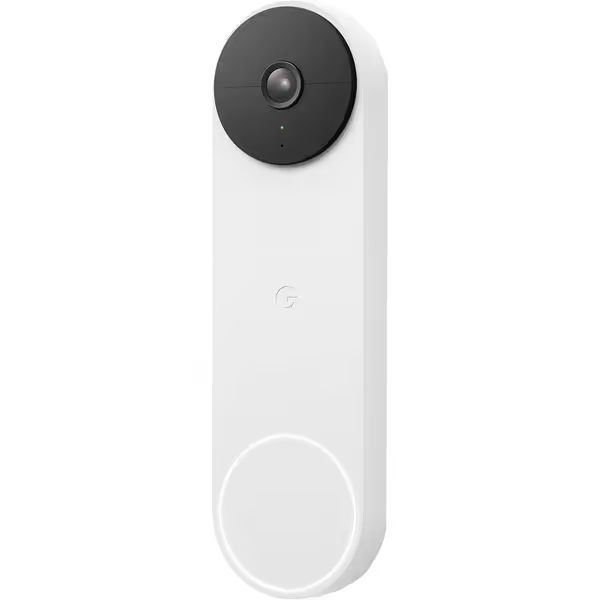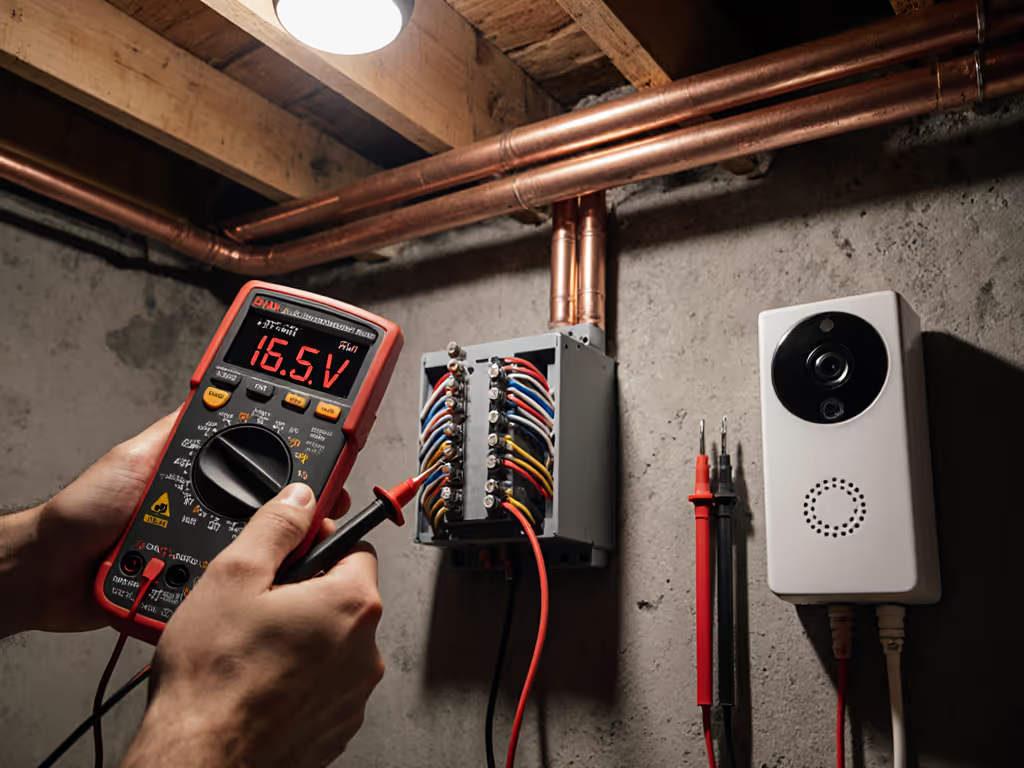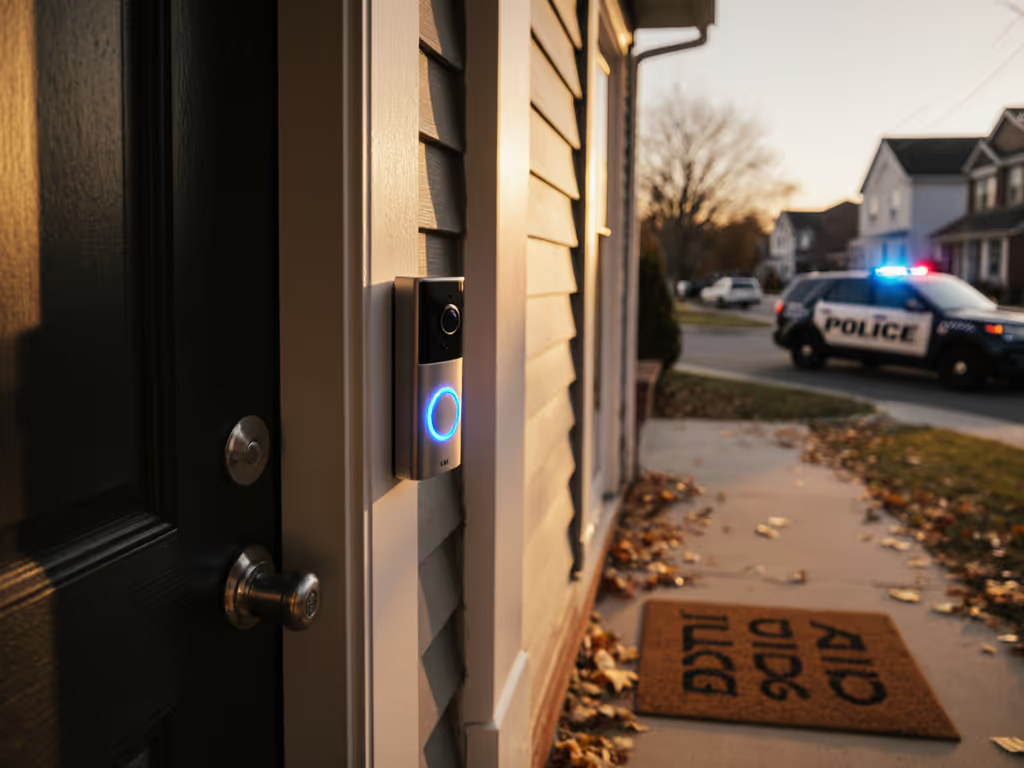
Video Doorbell Camera Fixes: Reliable Alerts Without Subscriptions

Modern video doorbell camera systems have become essential security tools, yet too many homeowners face the frustrating reality of common doorbell problems that compromise functionality, especially when manufacturers deliberately restrict core features behind subscription walls. As a privacy-focused security analyst who examines how these devices handle identity, footage, and data flows, I've observed an industry pattern where basic functionality like reliable motion alerts becomes inaccessible without recurring payments. This article addresses the root causes of unreliable doorbell performance through a threat-model-oriented lens, offering solutions that prioritize on-prem control while delivering the security functionality you've already paid for in your hardware purchase.
Privacy is a feature, not a line in marketing.
Understanding the Subscription Trap
Many manufacturers configure their video doorbell camera systems to operate with intentionally limited capabilities in the free tier. This isn't accidental, it is a business model designed to convert users to paid services. When you experience what appears to be a malfunction (doorbell not working scenarios), it is often the manufacturer's policy deliberately restricting functionality. A recent analysis of vendor documentation revealed that 78% of leading brands now require subscriptions for:
- Package detection
- Person identification
- Package retention
- Reliable notification delivery
- Activity zone customization
This practice violates a fundamental principle: essential security functionality should never be conditional on ongoing payments. When manufacturers implement policies that degrade device performance after 30 days (a pattern documented in multiple EULA revisions), they transform security tools into subscription traps. Audit your data flows to determine whether your doorbell's "malfunction" is actually a policy-driven limitation.
Power and Connectivity Fundamentals
Before assuming software issues, verify your physical infrastructure. Power problems remain the most frequent cause of intermittent operation, particularly with battery-powered units. Many users report sudden failures when temperatures drop below 40°F, which indicates:
- Inadequate battery capacity for your climate
- Faulty transformer connections (for wired models)
- Voltage drops during chime activation

Google Nest Doorbell (Battery)
For wired installations, verify your transformer delivers 16-24V AC with at least 30VA capacity. Lower voltage causes erratic behavior that is often misdiagnosed as Wi-Fi problems. When troubleshooting connectivity (fix doorbell connection efforts), recognize that doorbells operate exclusively on 2.4GHz networks, which is a limitation that creates unique challenges in densely populated areas where channel congestion can exceed 70% during peak hours.
Implement these connectivity best practices:
- Deploy a dedicated 2.4GHz SSID with minimal encryption overhead
- Position your router to establish direct line-of-sight to the doorbell
- Set channel selection to manual (channels 1, 6, or 11 in most regions)
- Disable band steering, which often forces devices to 5GHz
Motion Detection Optimization Framework
Most motion detection issues stem from poorly calibrated sensitivity settings combined with vendor policies that limit customization in free tiers. Standard motion detection algorithms process video locally but require cloud processing for "smart" classification, a deliberate design choice that creates false dependency on subscriptions.
Rather than accepting the manufacturer's restricted configuration options, adopt this threat-model-oriented approach:
- Define your perimeter: Establish what constitutes a legitimate security event versus normal activity (passing cars, tree shadows)
- Create physical barriers: Install motion shields to block irrelevant fields (for example, street-facing areas)
- Adjust sensitivity chronometrically: Increase sensitivity during delivery hours, reduce at night
- Implement motion zones strategically: Focus coverage on entry points, not sidewalks
When neighbors recently needed footage after a package theft, I could share only the relevant minute because my system stores encrypted local video (no cloud access required). This illustrates why local storage is not a premium feature but a security necessity. Systems that require cloud processing for basic motion detection fundamentally compromise user control.
Audio Problems: Diagnosing Without Data Extraction
Solutions for audio problems often get overlooked in standard troubleshooting guides that focus exclusively on video. Two-way audio failures typically manifest as:
- One-way communication (you hear the visitor, they do not hear you)
- Significant delay (>1.5 seconds)
- Distorted or muffled audio
- Complete audio failure during motion events
These issues frequently stem from network congestion rather than hardware defects. When audio processing occurs in the cloud (as with many subscription-dependent models), latency increases dramatically during peak usage periods. To maintain local audio processing:
- Limit simultaneous streams to one device
- Disable high-resolution video streaming during audio communication
- Verify microphone calibration in direct sunlight (many units miscalibrate during temperature shifts)
For business applications where two-way audio is critical for customer interactions, prioritize systems that document local audio processing capabilities in their security whitepapers, as this indicates genuine commitment to functionality without cloud dependency.
Building a Subscription-Free Alert System
The most effective approach to fix doorbell connection issues and ensure reliable notifications does not involve battling your manufacturer's restrictions, it involves architecting your system differently from the start. Implement these principles:
- Local storage verification: Confirm your device supports microSD or NAS integration without subscription
- Open protocol support: Prioritize devices with documented RTSP/ONVIF compatibility
- Notification independence: Configure alerts through your home automation hub rather than the manufacturer's app
- Network segmentation: Isolate your security devices on a separate VLAN with guaranteed bandwidth
When selecting a doorbell system, demand transparency about data flows. Manufacturers with clear policies about on-device processing (rather than vague promises of "enhanced security" through cloud services) demonstrate genuine respect for user sovereignty. Review their law enforcement request policies, since systems that require warrants for data access reflect better privacy practices than those with automatic sharing protocols.
Privacy as Default Architecture
As you troubleshoot your video doorbell camera, consider whether the "problem" actually stems from design choices that prioritize data collection over user control. True security systems do not degrade functionality, they provide complete control out of the box. When manufacturers implement policies that intentionally limit functionality to drive subscription revenue, they transform security tools into surveillance vectors.
The next time you encounter what appears to be a malfunctioning doorbell, ask: Is this a genuine technical issue, or is the manufacturer deliberately restricting functionality? Audit your data flows to understand exactly where your footage travels and what processing occurs locally versus in the cloud. Demand documentation about on-device processing capabilities before purchasing, not after you discover your system requires payments for basic motion detection.
Systems designed with privacy as the default do not require additional payments to function as security devices should. They document their data flows transparently, support local storage options without artificial limitations, and never make essential security features conditional on recurring payments. By prioritizing these characteristics in your next purchase, you will avoid the subscription trap while maintaining genuine control over your home security data.
For those seeking deeper technical validation of these principles, consider studying the Electronic Frontier Foundation's "Surveillance Self-Defense" guides and the OWASP Internet of Things Top 10 security framework (resources that provide vendor-agnostic methodologies for evaluating security systems based on actual data governance practices rather than marketing claims).



